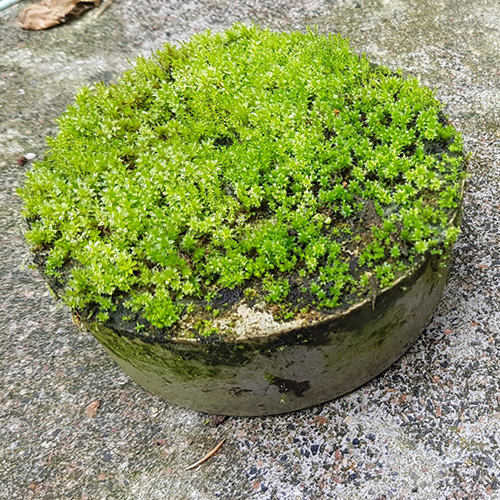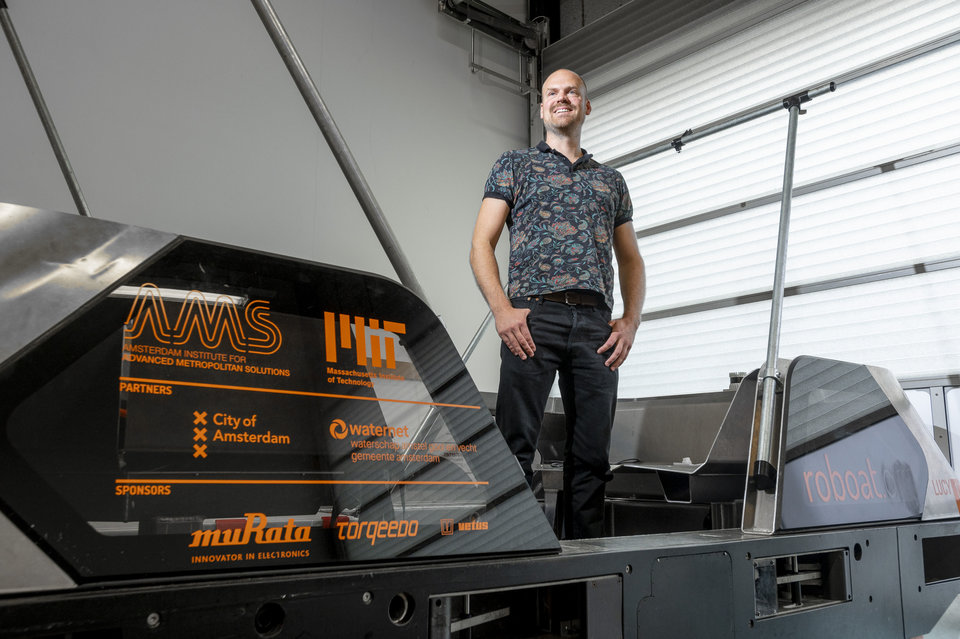Respyre’s green concrete breathes new life into the city
The TU Delft start-up Respyre produces ‘bioreceptive’ concrete: a layer of recycled concrete that can be added to ‘ordinary’ concrete forming a perfect base for moss growth, without damaging the underlying material. The result: lower temperatures in overheated cities and the capture of fine particulates. Eight insights from CEO and co-founder Auke Bleij.
By Jochen Meischke • September 22, 2023

1. Embrace random opportunities when you encounter them
Auke: “Respyre saw the light of day thanks to TU Delft alumnus Mark de Kruijff, who identified commercial opportunities in Delft patents for bioreceptive concrete. Soon after that, I conducted research into the heat-island effect, which causes urban areas to become much hotter than surrounding rural areas and to suffer much more from heatwaves. I studied how moisture in the façades of buildings can evaporate, drawing in heat from the streets. It was only by random chance that I came across Mark. “Out of the blue, a friend said to me ‘I know a start-up that’s working on that very thing’ – and it turned out that Mark had a practical solution for my theoretical idea, which was: to allow moss to grow on buildings.”


2. Add value to existing infrastructure
“Respyre doesn’t manufacture structural concrete (which needs to be load-bearing), but a coating that goes on top of it. It’s made up of 70% recycled concrete. So, that means we’re taking waste that's difficult to process and bringing it back to the built environment, where it adds value as the basis for our bioreceptive concrete. It also has the unique property of being able to retain a lot of water and promote moss growth, without damaging the underlying concrete.”
3. You can also take inspiration from nature
“Respyre is facilitating a controlled form of what regularly happens on old stone surfaces already. Take our quay walls, where moss can frequently be seen growing. It means that something is damaged, allowing moisture to penetrate the mortar. Our material has the right porosity to enable moss to grow, but is also strong enough to last 30 years.
“One of the great characteristics of moss is the fact that it has rhizoids: A root-like organ that absorbs water and nutrients. Unlike roots, rhizoids don’t damage the substrate. This is in contrast to climbing plants and living walls (vertical gardens) that need planting in containers and attach themselves to the substrate (sometimes with destructive results).“


4. The most convenient solution is always the most promising
“Our moss can easily complete with living walls and climbing plants. They both need pruning several times a year. They’re also incredibly expensive: a living wall can easily cost €500 per square metre. We can take a square metre of moss as our basis and grow 80 square metres of moss from it. It doesn’t need pruning and has no need for a container. If you do it at scale, that makes this solution really cheap.”
5. Nothing absorbs fine particulates better than moss
“My main focus was on reducing temperatures. But, at Respyre, I quickly learnt huge amounts about moss in a short space of time. I learnt that moss is not only amazing at retaining moisture but also absorbs huge quantities of fine particulates. Nothing absorbs fine particulates better than moss. The moss also provides a habitat for an incredible number of small insects, enabling you to give a real boost to biodiversity in the city. These characteristics are more than just a positive side-effect. They’re potential game changers for authorities facing issues with air quality in their city. In urban areas, levels of fine particulates can often be three times higher than the WHO recommended maximum values. We can do something about that problem. By using moss.”


6. Spread your bets – and seize the zeitgeist
“We’re in the process of preparing the launch of three products onto the market: a grout for treating existing walls and façades, a solution that can be applied using a spray, and prefab elements in the form of ready-to-use cladding. It’s quite a challenge, because we’re experimenting and innovating on three fronts simultaneously.”
“Construction companies, contractors, project developers, concrete manufacturers: many of the players in the building supply chain are aware of the need for change. We offer them a ready-to-use solution that requires no initial R&D investment on their part. With our bioreceptive concrete, they can add a green product to their range within the space of a year. We can help companies to green their portfolios with ease.”
7. Build better with concrete
“Large-scale application of bioreceptive concrete: that’s my ultimate aim. Concrete currently has a poor reputation: high CO2 emissions, energy-intensive to produce, often grey in appearance. But for the time being, it’s indispensable in our built environment. We need to make sure we apply it more effectively.”


8. Affordable green initiatives are possible at surprising locations
“Introducing more vertical green areas into cities is currently still (too) expensive, prestigious and high maintenance. I dream about all the unexpected places in Dutch cities where moss could make a difference, such as the blocks of flats in Osdorp. All those bare-looking end gables. Traditionally, little is invested in the environment. But you can make a huge difference with a green façade.”

![[Translate to English:] [Translate to English:]](https://filelist.tudelft.nl/_processed_/b/3/csm_HR_MKX05997_scaled_53b5d51bf2.jpg)




